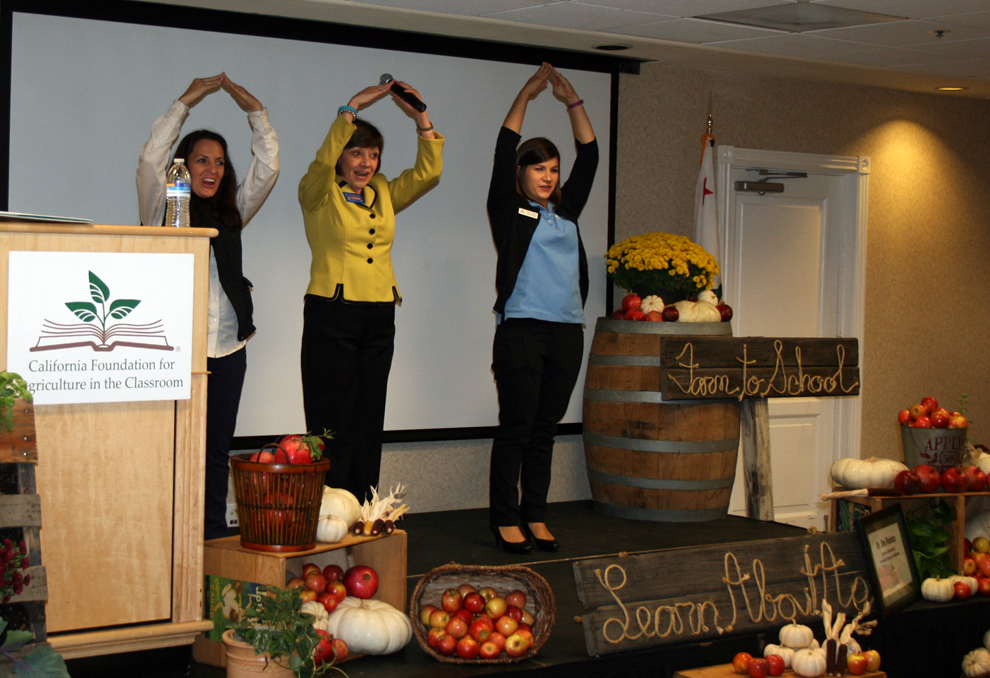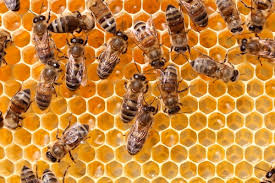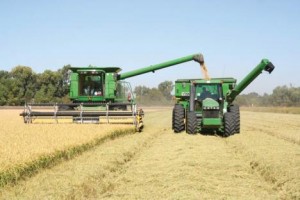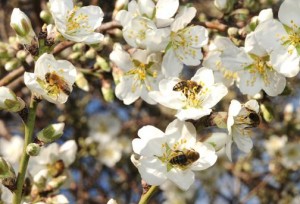
CDFA Secretary Karen Ross (center) helps demonstrate the five F’s of agriculture–Food, Fiber, Flower, Forests and Fuel–at a California Foundation for Agriculture in the Classroom event this month in Santa Cruz. The picture depicts the impacts of forests, showing that they help provide housing.
More than 220 California educators and volunteers attended an annual California Agriculture in the Classroom Conference earlier this month to learn about agriculture and connecting Common Core to California crops. The conference, hosted by the California Foundation for Agriculture in the Classroom (CFAITC), was held October 16-18 in Santa Cruz County and provided participants with free resources and valuable avenues for teaching Common Core, STEM, and school garden/nutrition lessons.
The program, designed for educators, administrators, and community volunteers, presented opportunities to explore the agricultural industry and enhance existing curriculum with examples and scenarios about food and fiber production. California Secretary of Agriculture Karen Ross welcomed the group of educators along with Dr. Jim Painter, professor emeritus at Eastern Illinois University. Renee Shepherd, owner of Renee’s Garden, also spoke to the educators and Michael Marks, Your Produce Man, closed the conference with trivia about the more than 400 crops grown in California. Conference participants were able to experience the variety of agriculture at the conference and were able to learn directly from leading agricultural experts.
In her comments, Secretary Ross shared the importance of California agriculture, emphasizing the many things that stem from from agriculture, and helped teach the educators the 5 F’s of agriculture – Food, Fiber, Forests, Flowers, and Fuel.
From cut flowers and strawberries to artichokes and timber, Santa Cruz County is the smallest agriculture producing county in California in land mass and one of the most diverse.
The California Ag in the Classroom conference empowers attendees to return to their classrooms and school communities confident and capable of sharing the importance of agriculture’s significant impact on California and its economy with their students.
CFAITC is a 501(c)(3) organization that works with K-12 grade level teachers, students and community leaders, to enhance education using agricultural examples. The organization’s mission is to increase awareness and understanding of agriculture among California’s educators and students. The ultimate vision of the organization is an appreciation of agriculture by all.









